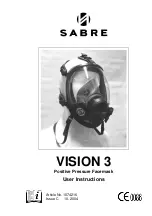
Section 11: Remote operations
Model 6517B Electrometer Reference Manual
11-12
6517B-901-01 Rev. C / August 2015
Query commands
This type of command requests (queries) the currently programmed status. It is identified by the
question mark (
?
) at the end of the fundamental form of the command. Most commands have a query
form. Example of querying the timer interval:
:TRIGger:TIMer?
Most commands that require a numeric parameter (
<n>
) can also use the
DEFault
,
MINimum
, and
MAXimum
parameters for the query form. These query forms are used to determine the
*RST
default
value, and the upper and lower limits for the fundamental command. Examples:
Query the *RST default value:
:TRIGger:TIMer? DEFault
Query the lowest allowable value:
:TRIGger:TIMer? MINimum
Query the largest allowable value:
:TRIGger:TIMer? MAXimum
Case sensitivity
Common commands and SCPI commands are not case sensitive. You can use upper or lower case,
and any case combination. Examples:
*RST
=
*rst
:SCAN?
=
:scan?
:SYSTem:PRESet
=
:system:preset
Long-form and short-forms
A SCPI command word can be sent in its long-form or short-form version. The command subsystem
tables in
SCPI command reference
(on page 14-1) provide the commands in the long-form version.
However, the short-form version is indicated by upper case characters. Examples:
:SYSTem:PRESet
Long-form
:SYST:PRES
Short-form
:SYSTem:PRES
Long and short-form combination
Note that each command word must be in long-form or short-form, and not something in between. For
example,
:SYSTe:PRESe
is illegal and generates an error. The command is not executed.
















































